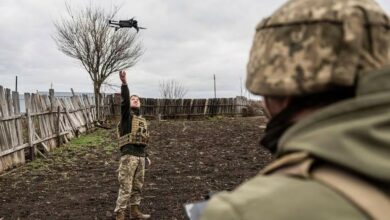The US Air Force test flew an unmanned aerial vehicle (UAV) last month carrying a hardware/software autonomy suite for the first time, the service said in a statement.
The Skyborg suite, which will allow the “teaming” of manned and unmanned aircraft, flew aboard a Kratos UTAP-22 Mako air vehicle as the first step in the Autonomous Attritable Aircraft Experimentation campaign.
The campaign was initiated by the USAF Research Laboratory with the goal of building a cheaper alternative to manned aircraft capable of performing all the functions of a manned aircraft, as well as being able to fly with one as a wingman.
130-minute Flight
The aircraft performed a “series of foundational behaviors necessary to characterize safe system operation” during a 130-minute test flight at Tyndall Air Force Base, Florida, the service stated.
During the flight, the aircraft responded to navigational commands, stayed within set “geo-fences,” stuck to its flight envelope, and “demonstrated coordinated maneuvering.”
“We’re extremely excited for the successful flight of an early version of the ’brain’ of the Skyborg system. It is the first step in a marathon of progressive growth for Skyborg technology,” said Brig. Gen. Dale White, Program Executive Officer for Fighters and Advanced Aircraft, Skyborg.
“These initial flights kick off the experimentation campaign that will continue to mature the ACS (autonomy core system) and build trust in the system.”
Swarm of AI-Controlled Drone Flights Lined Up Next
In the next series of tests in the campaign, a manned aircraft will fly with “multiple ACS-controlled unmanned aircraft.”
The Skyborg team is aiming for full-mission autonomy with “low-cost, attritable” UAVs, a system reusable and cheap enough that loss during combat is tolerable.
“Skyborg will provide the foundation on which the Air Force can build an airborne, autonomous ‘best of breed’ system of systems” that will adapt and orient to the battlespace and make decisions “at machine speed for a wide variety of complex mission sets,” the statement added.












